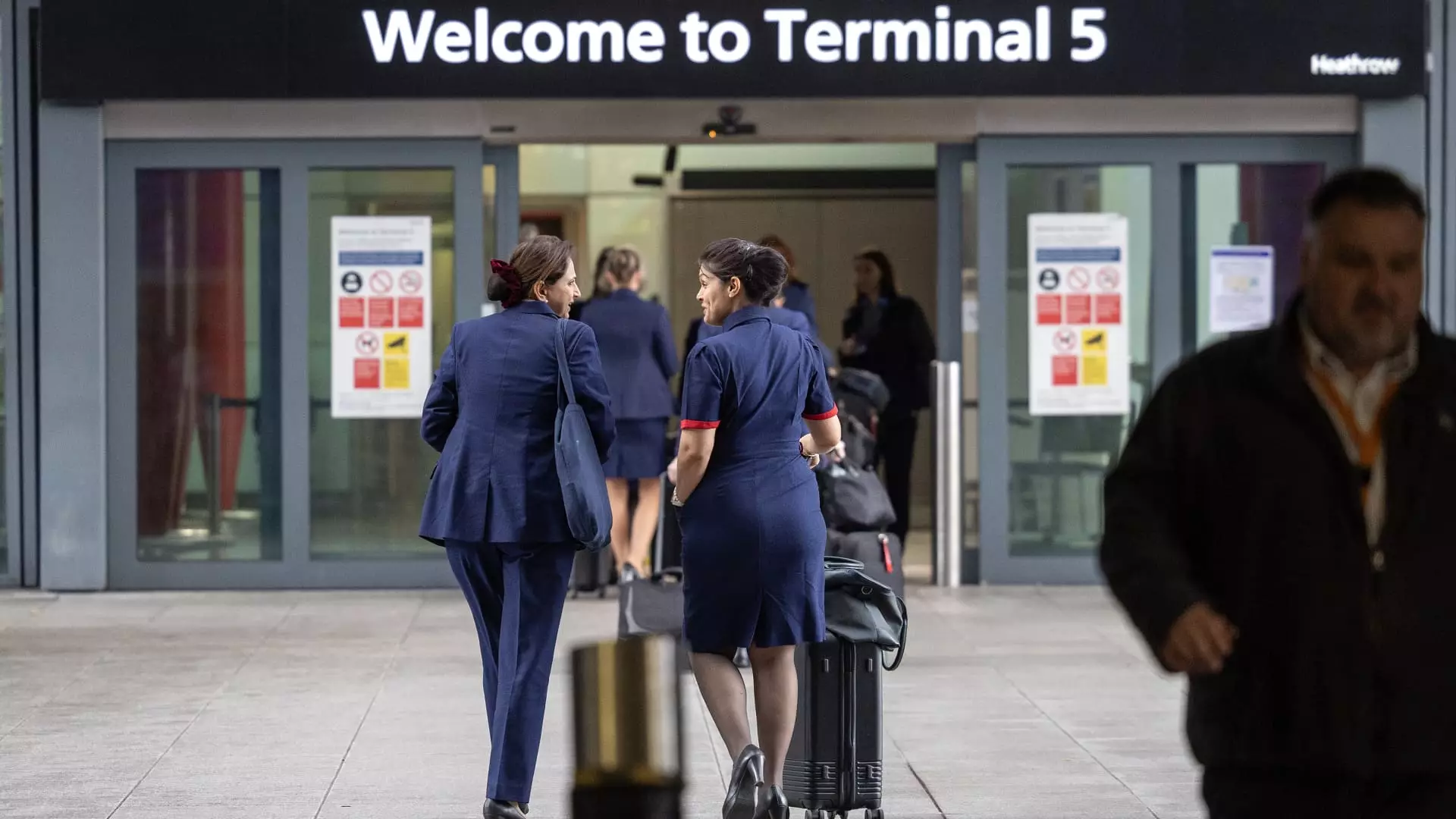This past weekend, London’s Heathrow Airport experienced a logistical nightmare that highlighted a glaring flaw in one of the world’s busiest transport hubs. After suffering a power outage caused by a fire at a nearby electrical substation, the airport was effectively paralyzed for most of Friday. Over 800 flights were abruptly canceled, leaving thousands of travelers stranded and desperate for clarity. The reopening on Saturday came with its own set of challenges, as travelers were welcomed back to not just delays, but a market shrouded in uncertainty and sarcasm.
To put this into perspective, imagine planning your trip to connect with friends or loved ones, only to find that your hopes of jetting off are grounded by faulty infrastructure. Travelers were left reeling, many unsure whether their flights would even resume. Heathrow’s promise of returning to a regular schedule was met with skepticism; after all, how does one effortlessly bounce back from such upheaval? The truth is, this incident raises serious questions about the infrastructure that we often take for granted.
The Vulnerability of Modern Airlines
As airlines worked furiously to resume operations, British Airways emerged as one of the most-impacted carriers. The airline canceled over half of its flights on Friday, struggling to manage the chaos that entailed. Instead of focusing on customer experience and smooth operations, they were forced to react. By Saturday, they announced that they expected to run about 85% of their scheduled flights, but could not guarantee smooth sailing; delays seemed inevitable. Is this indicative of a larger issue within the airline industry? Are our systems designed so poorly that one single point of failure can have widespread consequences?
The National grid’s measures to restore power and improve future resilience were commendable, but one can’t help but wonder what “improving resilience” even means in this context. Critics argue that a modern airport’s dependability should not rest on singular power sources. The notion of absolute efficiency becomes banal when it’s so easily derailed by one electrical fault. These failures paint a concerning picture of infrastructure investment, forcing us to acknowledge that, as much as technology has advanced, human oversight remains a challenge.
A Politically Charged Reaction
Willie Walsh, the former CEO of British Airways’ parent company IAG and current leader of IATA, described the incident as a “total planning failure.” His words resonate profoundly within broader conversations about accountability. Should airlines bear the brunt of financial chaos when systemic failures occur? Walsh’s assertions beckon for a reconsideration of cost allocations: if infrastructure lets us down, could it be unreasonable to expect carriers to pick up the pieces?
Moreover, the Metropolitan Police’s decision to involve the counterterrorism division in investigating the matter only added to the mystique, leaving many to contemplate the seriousness of the situation. While officials assured the public that there was no indication of foul play, the association ignited an undercurrent of anxiety. Would this tragedy be dismissed as an accident or rightfully scrutinized as a national blunder?
Travel Chaos and Consumer Frustration
For travelers impacted by the chaos, this kind of disturbance has broader implications. The frustration palpable in the airport’s corridors prompted cries for better communication from airlines and authorities alike. When faced with momentary chaos, passengers often become collateral damage in battles of bureaucracy. Airlines, swift to send alerts about cancellations, simultaneously thrust conflicting updates that leave passengers more confused than informed.
Flexibility in rebooking options for travelers, as British Airways and Virgin Atlantic proposed, might alleviate immediate distress. Still, the ultimate question remains unaddressed: how do we safeguard customers against the incompetence surrounding systemic failures? It seems high time for greater conversations about shared responsibility between both airlines and infrastructure providers.
When disasters strike a major international airport, the ripple effects are felt far beyond its terminals. What could be a simple inconvenience for some may evolve into lost opportunities for many. As scrutiny falls on the structural integrity of our airport systems, one can only hope we are more prepared for the inevitable future failures, rather than waiting for another chaotic weekend to awaken us to the reality of our infrastructure’s vulnerability.


Leave a Reply